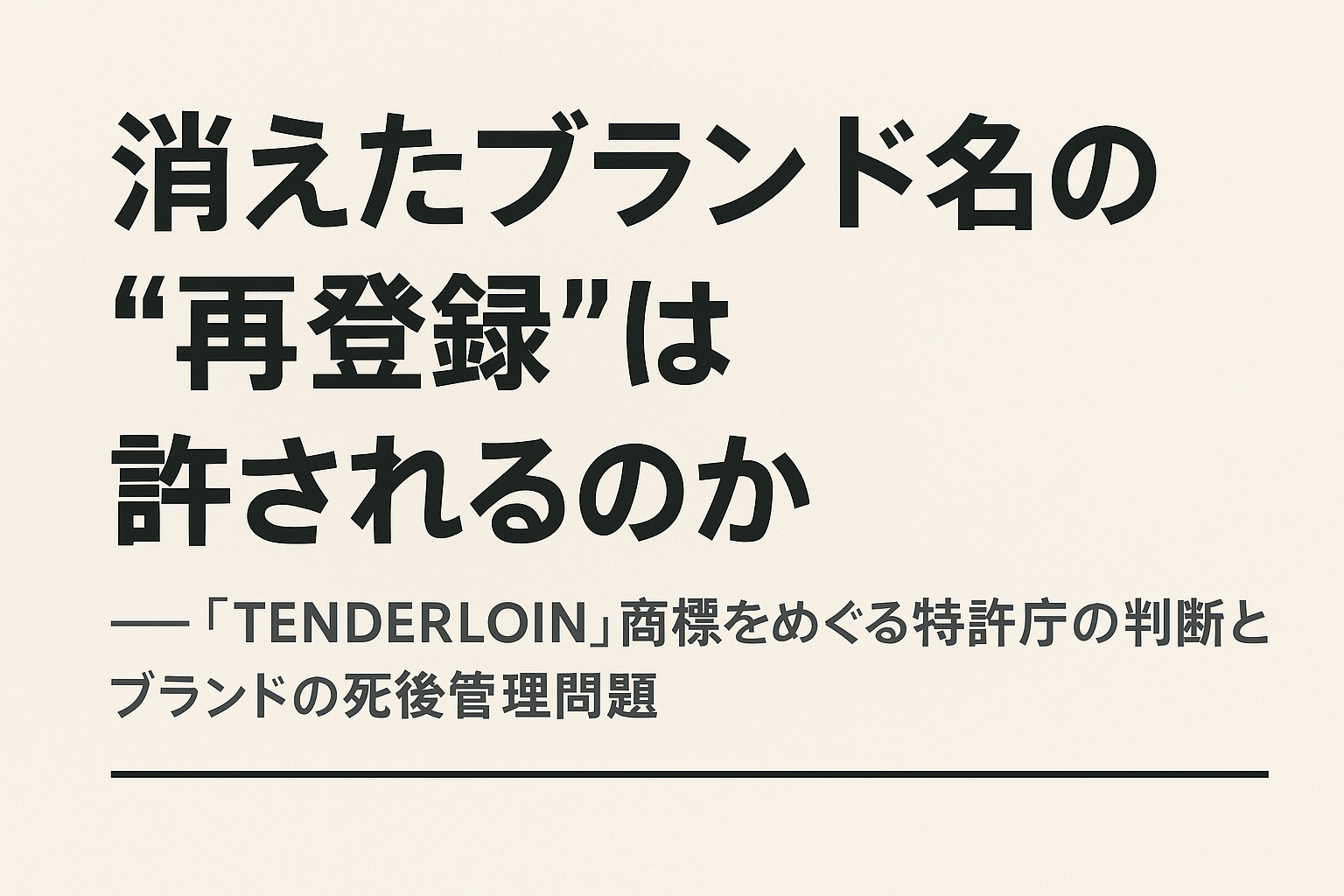A Legendary Brand Falls into the Hands of a Third Party
“TENDERLOIN,” a streetwear brand founded in 1997 and famously worn by celebrities such as Takuya Kimura, once defined an era in Japanese fashion.
By around 2023, however, the brand had ceased operations, and its trademark registration was officially canceled in November 2022.
In October 2024, it was discovered that an entirely unrelated company had newly acquired the trademark.
The applicant argued that “tenderloin” is a generic English term meaning “beef fillet,” and the Japan Patent Office (JPO) accepted this reasoning.
Although the JPO initially refused registration—citing that “Tenderloin” is a place name (a district in San Francisco) and that use might unfairly exploit the reputation of the former brand—it ultimately approved the trademark’s re-use.
A Defunct Brand Name Is Not “Ownerless”
Once a trademark is canceled, it theoretically becomes open for anyone to re-apply.
However, Japan’s Trademark Act includes provisions (such as Article 4(1)(vii) and (xix)) that prohibit bad-faith applications.
In principle, reusing another party’s well-known mark is not allowed.
In this case, the former TENDERLOIN brand was no longer active, and the JPO determined that its recognition among consumers had diminished—allowing the applicant to overcome the rejection.
Conversely, this implies that the JPO considered the brand’s fame to have faded, which may be a bittersweet outcome for its once-devoted fans.
Yet a “Trial for Invalidation” Could Still Overturn It
Even after registration, the mark could later be invalidated.
If it is proven that the applicant intended to gain unfair benefit from the goodwill of the old brand, or if the new use could cause consumer confusion regarding product quality—such as selling low-quality goods under the “TENDERLOIN” name—the registration could be invalidated under Article 4(1)(xv) or (xix) of the Trademark Act.
However, since the original brand has already ceased business, proving “actual damage” is difficult.
Under current practice, completely preventing “re-registration of abandoned brands” remains challenging.
“Posthumous Brand Management” as a Legal Frontier
This case highlights a gap in intellectual property protection that arises after a brand’s “death.”
While copyrights in music or literature continue for a fixed term after the creator’s death, trademark rights lapse if not renewed.
As fashion houses and startups wind down operations, questions such as “How should we protect our brand name?” and
“How can we prevent third-party re-registration?” are becoming increasingly vital components of end-of-life IP strategy.
Conclusion — Managing a Brand’s “Remaining Lifespan”
The TENDERLOIN case is more than a story of a “revived famous brand.”
It raises a broader question about the life cycle of intellectual property:
How do we prolong a brand’s lifespan—and how do we let it end gracefully?
- Continue managing domains and trademarks even after business closure
- Establish clear trademark disposition policies (transfer, maintenance, or abandonment) when winding down
- Publicly declare the official end of operations on social media and explicitly forbid third-party use
Ultimately, preserving a brand’s memory requires not just registration—but the ongoing expression of an intent to manage it.

